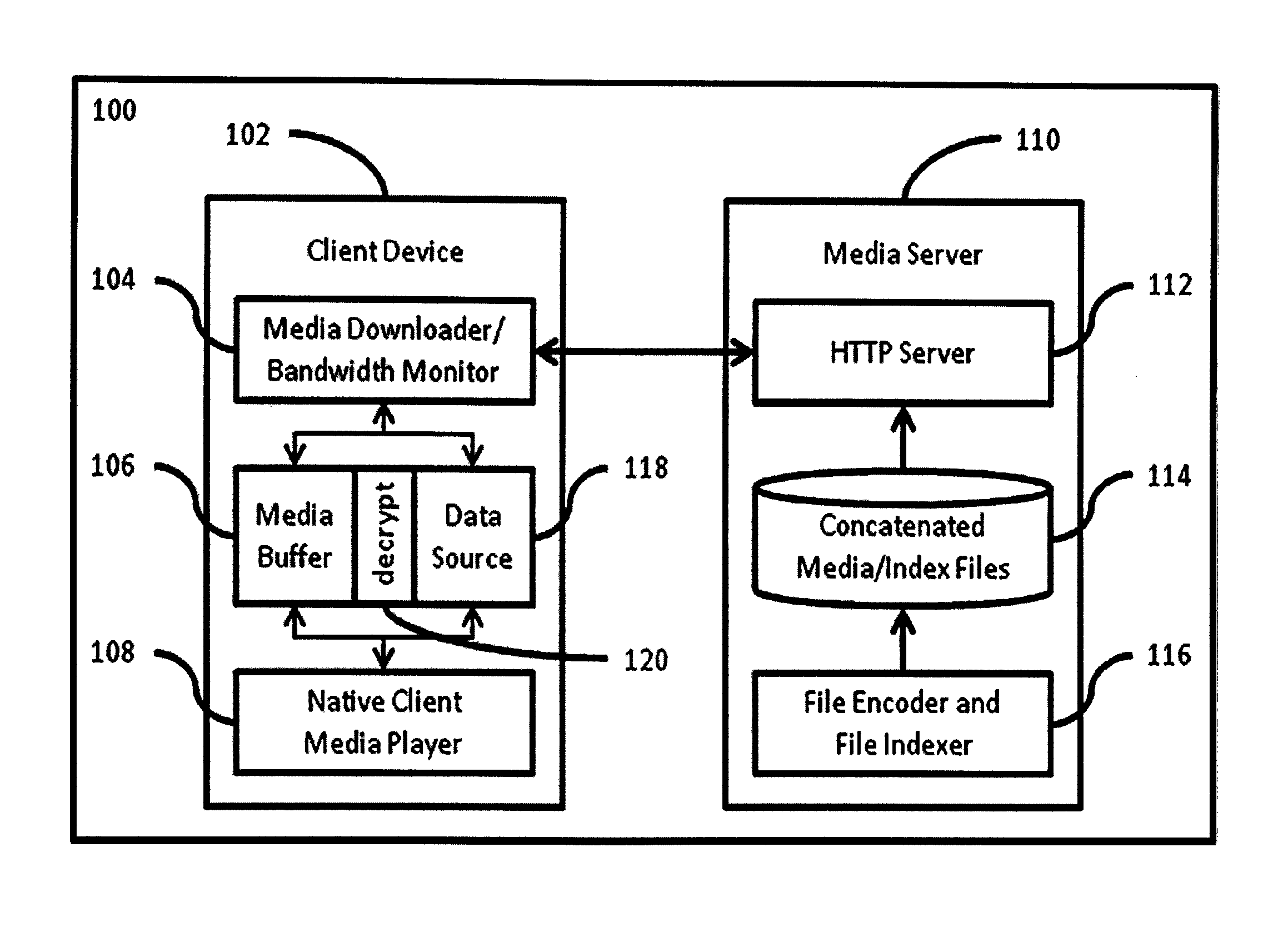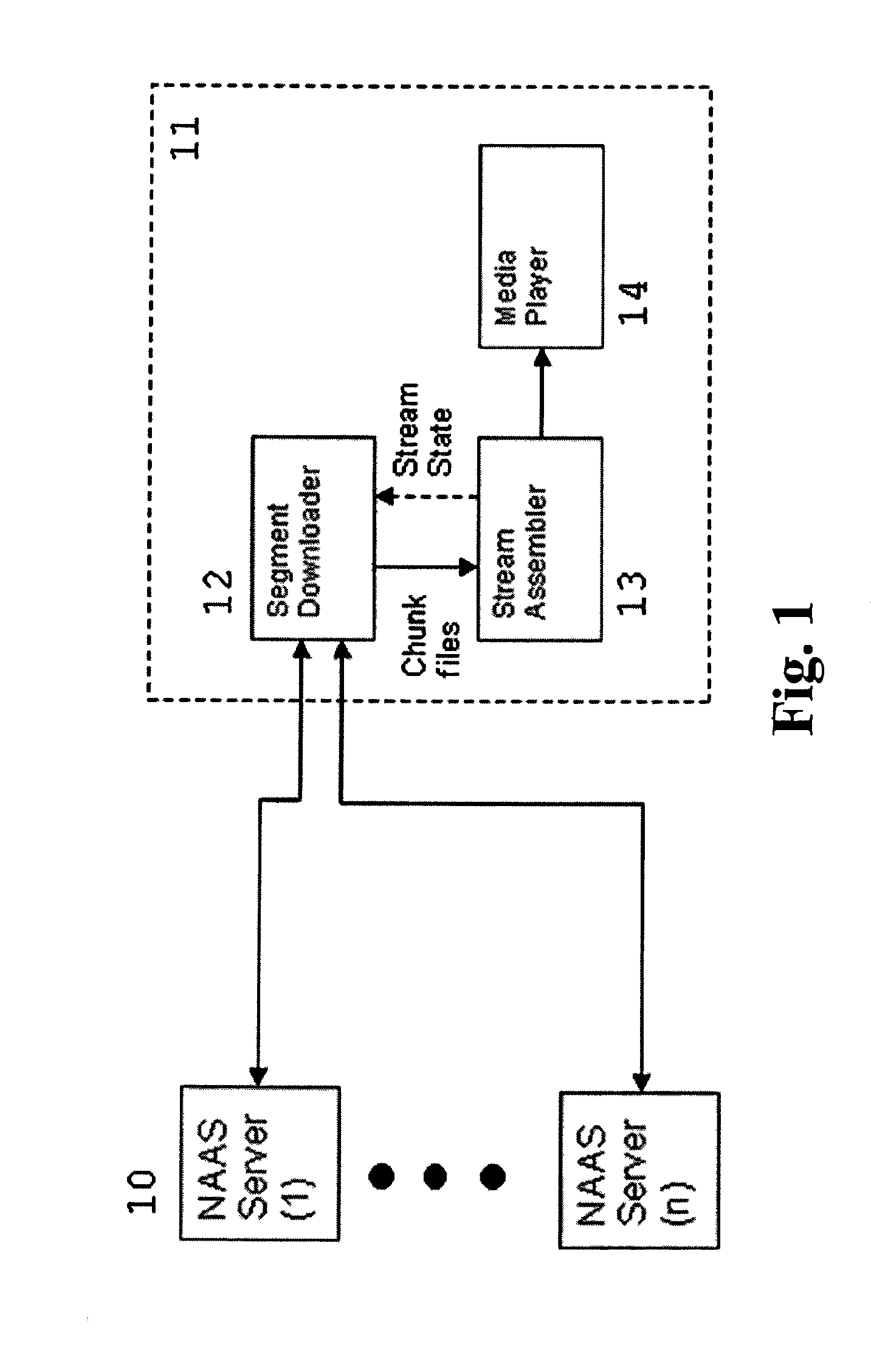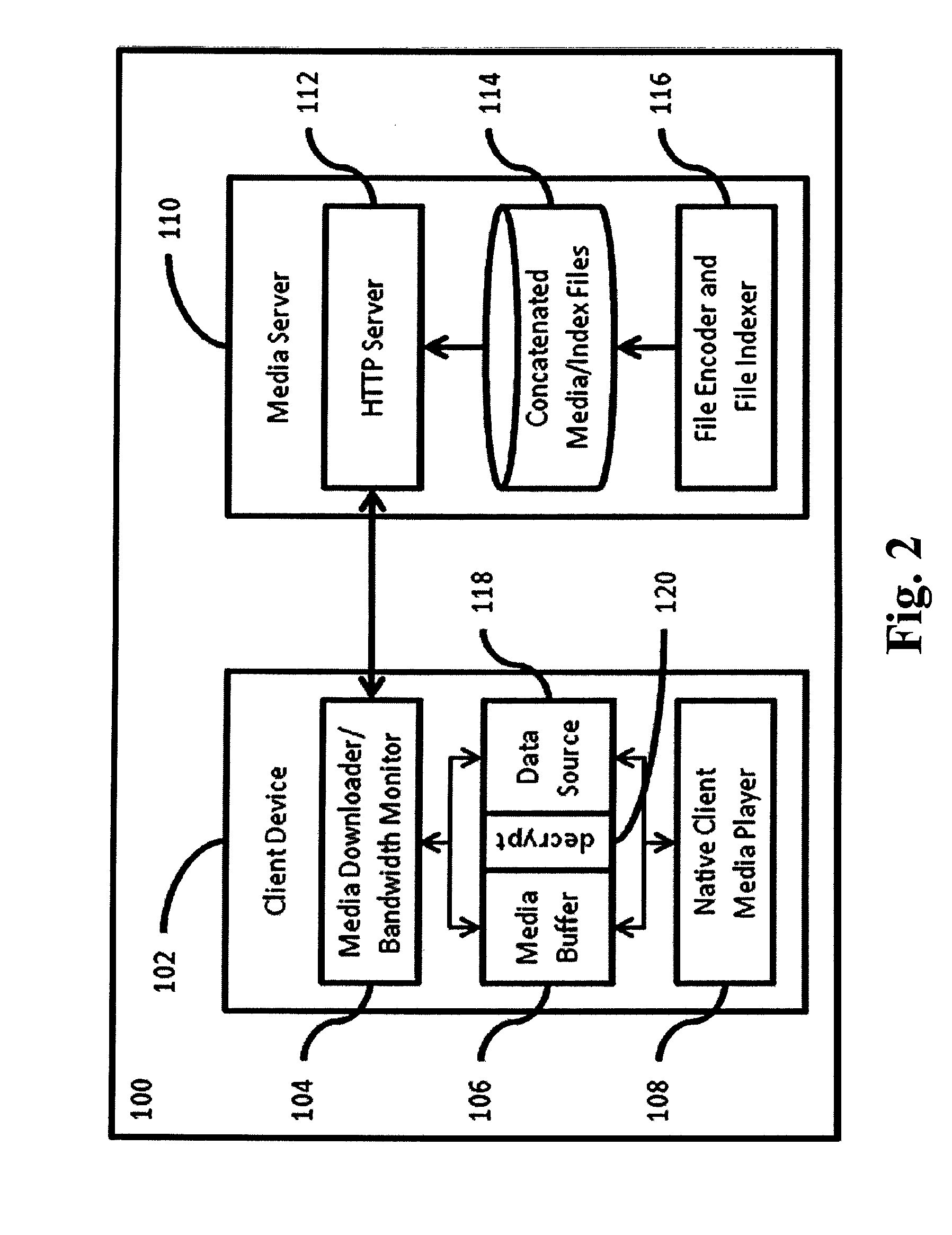System and method for network aware adaptive streaming for nomadic endpoints
a network aware and adaptive technology, applied in the field of streaming media, can solve the problems of large fluctuations in available bandwidth, exacerbate the naturally burst nature of the internet, and accelerate the degradation of bandwidth, so as to increase the total throughput and avoid the effect of overwhelming the network
- Summary
- Abstract
- Description
- Claims
- Application Information
AI Technical Summary
Benefits of technology
Problems solved by technology
Method used
Image
Examples
Embodiment Construction
[0024]In FIG. 1 is a block diagram for one embodiment of the present invention. It shows a client device 11 and a plurality of network-aware adaptive streaming (NAAS) servers 10. The client device 11 and NAAS servers 10 are both typically computerized devices which include one or more processors, memory, storage (e.g., magnetic or flash memory storage), and input / output circuitry all coupled together by one or more data buses, along with program instructions which are executed by the processor out of the memory to perform certain functions which are described herein. Part or all of the functions may be depicted by corresponding blocks in the drawings, and these should be understood to cover a computerized device programmed to perform the identified function.
[0025]In one embodiment, the NAAS servers 10 (referred to as servers herein) each contain a copy of the content being delivered to the client 11. In one embodiment, the servers 10 may be collocated in a single data center. In ano...
PUM
 Login to View More
Login to View More Abstract
Description
Claims
Application Information
 Login to View More
Login to View More - R&D
- Intellectual Property
- Life Sciences
- Materials
- Tech Scout
- Unparalleled Data Quality
- Higher Quality Content
- 60% Fewer Hallucinations
Browse by: Latest US Patents, China's latest patents, Technical Efficacy Thesaurus, Application Domain, Technology Topic, Popular Technical Reports.
© 2025 PatSnap. All rights reserved.Legal|Privacy policy|Modern Slavery Act Transparency Statement|Sitemap|About US| Contact US: help@patsnap.com



